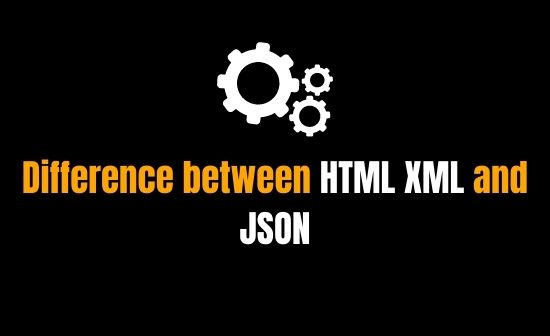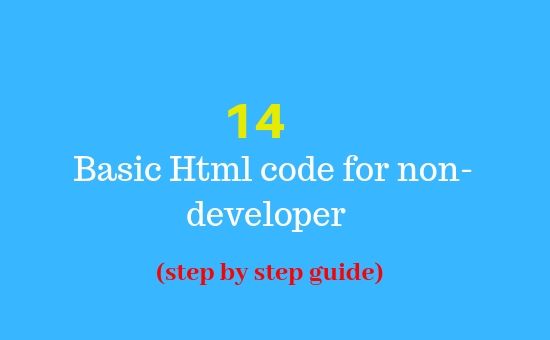Difference between HTML XML and JSON
JavaScript Object Notation and consequent beautify JSON tools have become one of the hot favorites in the coder’s domain – as lightweight, easy to access, and overall far more convenient than other market options. But there are other formats such as HTML, XML to name a few, that provide a number of desired traits as well. Below, I have shared the difference between HTML XML and JSON.
Similar to all other disciplines in the world, communication is the key in data exchange processes as well. Thus, the need for a credible data format that allows smooth communication and transference of ideas between systems.
How to analyze the available data formats?
Comparison through contrast is the way to do while making decisions in a situation where more than one option is available. Go through all three of the data formats on the basis of similar parameters and then decide which tool do you want to pick.
Say you choose JSON, so you also need to consider the beautiful JSON tools that are readily available in the market to pretty JSON. Similarly, HTML and XML also have additional applications that ensure the smooth functioning of the respective format.
What do the annotations stand for?
JSON is short for JavaScript Object Notation, a data format based on the JavaScript language. JSON beautify tools are an additional utility that allows easy maintenance of JSON.
XML stands for Extensive Markup Language – a derivative of SGML (Standard Generalized Markup Language). There are editors, generators, parsors, and other relevant tools available for XML as well.
HTML is an acronym for HyperText Markup Language – it is primarily utilized for web-based sites and pages. HTML requires assisted technologies to work with. It is also a derivative of SGML, similar to XML.
Why is there a need for additional helping tools?
To beautify JSON you would be requiring a JSON pretty print utility, otherwise, the work for even a single code would NEVER end. There is a lot of work that goes behind data formatting – from analyzing, to editing, to converting (if required), thus the need for an assistant. So by using a JSON beautifier online you can get a pretty JSON code within seconds. The same goes for other formats, XML and HTML.
What does a beautify JSON tool, or similar other applications do?
Coding is a lengthy process, even if you are working with a user-friendly and easy to handle format such as JSON. So it is the case with all three above-mentioned formats, that a web-based platform is more than welcome for the purpose of making the embellishment and the grooming process of your code a lot more hassle-free.
Which data format supports arrays?
Besides formatting tools such as beautify JSON, generate XML, and others – there are other parameters of judgment as well. Arrays are data structures utilized in digital communication for the purpose of data storage, that too for more than one data type.
JSON supports data types, from numbers to integers, strings, and arrays. But in the case of XML and HTML, as both are data format branches of the same parent language (SGML), there is no direct support for arrays. Rather, assistance by other data structures is required.
Why is JSON the preferred one out of the lot?
JSON as well as beautify JSON applications exist independent of language – which allows much longer use of the code as compared to both XML and HTML which are language-dependent data entities. JSON is the ideal format for data exchange because it uses familiar conventions rather than being language-dependent.
A little blast from the past to understand the data format hierarchy
HTML initiated in 1993 at the hands of Tim Berners. Since then there have been various versions and alterations of the structure. A rewrite of HTML, as a branch of XML, XHTML, has been one of the most successful versions. Today HTML 5.0 is the commonly used variety of HTML.
After the advent of HTML, came XML. It came forward around the 1990s because of the ineffectiveness of HTML in certain areas. For example, HTML did not allow the introduction of new text elements in its structure. In simple words, it is not extensible thus the need for XML.
The most recent of the lot is JSON and beautify JSON applications in the world of data formatting. The format was out in the 1980s, but gained public attention later in the ending years of the twentieth century – lightweight, human-readable, machine friendly, who wouldn’t like it?
It has been quite some time that JSON has been around in the market – doing wonders with the users because of its adjustable properties. It would not be wrong to say that JSON and consequent beautify JSON tools have almost replaced the to-go data structure for data transmission.
So who wins the debate?
We have briefly analyzed the difference between HTML XML and JSON. In terms of usage, functionality, and additional tools.
In the end, JSON and beautify JSON tools win. Why? As a data format, JSON is ideal for the job as it does so in the most effective way – which is not only time-saving but also saves losses on bandwidth. JSON prettifying tools are also similar to their parent structure in this regard. Thus, being a breeze to work with.




